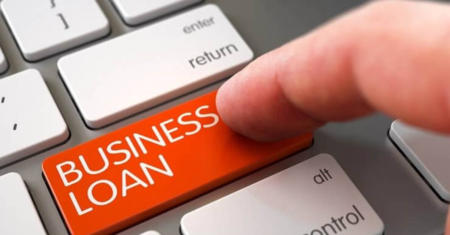
Are you looking for a profitable and fulfilling way to start your own Business Ideas in 2023? Do you have a passion, a skill, or a problem that you want to solve? Do you want to take advantage of the latest trends and opportunities in the market?
If you answered yes to any of these questions, then you are in the right place. In this blog article, we will show you how to find the best business ideas for 2023, based on your interests, strengths, and goals.
Related articles
4- Startup Loan For New Business
What is a Business Idea?
A business idea is a concept that can be turned into a product or service that can satisfy a customer need or want. A business idea can be based on your own experience, knowledge, or creativity, or it can be inspired by existing products or services, market gaps, or customer problems.
A good business idea should have the following characteristics:
- It should be unique and original. You don’t want to copy or imitate what others are doing. You want to offer something different and better that can stand out from the crowd and attract customers.
- It should be feasible and realistic. You don’t want to pursue something that is too complex, expensive, or risky. You want to choose something that you can actually execute and deliver, with the resources and skills that you have or can acquire.
- It should be profitable and scalable. You don’t want to waste your time and money on something that has low demand, high competition, or low margins. You want to select something that has high potential for growth and revenue, with minimal costs and challenges.
How to Find a Business Idea?
Finding a business idea is not a one-time event. It is an ongoing process that requires research, brainstorming, testing, and feedback. Here are some steps that you can follow to find a business idea:
Step 1: Identify your passions and skills
The first step to find a business idea is to identify your passions and skills. What are the things that you love to do, learn, or talk about? What are the things that you are good at, or want to become good at? What are the things that make you happy and fulfilled?
Your passions and skills are the sources of your motivation and value. They can help you find a business idea that aligns with your interests, strengths, and goals. They can also help you create a business that you enjoy and excel at.
To identify your passions and skills, you can ask yourself questions such as:
- What are my hobbies and interests?
- What are my talents and abilities?
- What are my values and beliefs?
- What are my goals and dreams?
- What are my problems and challenges?
You can also use tools like Myers-Briggs Type Indicator, StrengthsFinder, or Skillshare to discover more about your personality, strengths, and skills.
Step 2: Research the market and trends
The second step to find a business idea is to research the market and trends. What are the needs and wants of your potential customers? What are the gaps and opportunities in the market? What are the trends and changes in the industry?
Your market and trends are the indicators of your demand and potential. They can help you find a business idea that solves a problem or satisfies a desire for your target audience. They can also help you create a business that is relevant and competitive.
To research the market and trends, you can use tools like [Google Trends], [Keyword Planner], or [Oberlo] to analyze the popularity and direction of different products or niches. You can also use tools like [SimilarWeb], [SEMrush], or [Ahrefs] to study your competitors’ websites, traffic sources, keywords, backlinks, product offerings, prices, reviews, etc.
Step 3: Generate and evaluate ideas
The third step to find a business idea is to generate and evaluate ideas. Based on your passions and skills, and your market and trends, what are some possible products or services that you can offer? How can you make them unique and valuable? How can you test them with real customers?
Your ideas are the outcomes of your creativity and innovation. They can help you find a business idea that is original and feasible. They can also help you create a business that is profitable and scalable.
To generate ideas, you can use techniques like:
- Brainstorming. Brainstorming is a technique where you generate as many ideas as possible without judging or filtering them. You can do this by yourself or with others, using tools like [MindMeister], [Miro], or [Stormboard] to organize your thoughts.
- Mind mapping. Mind mapping is a technique where you create a visual representation of your ideas and their connections. You can do this by using tools like [MindMeister], [Miro], or [Stormboard] to draw your ideas and link them together.
- SCAMPER. SCAMPER is a technique where you use seven questions to modify or improve your ideas. The questions are: Substitute, Combine, Adapt, Modify, Put to another use, Eliminate, Reverse. You can do this by using tools like [MindMeister], [Miro], or [Stormboard] to apply the questions to your ideas Business Ideas.
To evaluate ideas, you can use criteria like:
- Demand. How many people want or need your product or service? How much are they willing to pay for it? How often will they buy it?
- Competition. How many competitors are there in the market? How strong are they? How can you differentiate yourself from them?
- Profitability. How much does it cost to produce or deliver your product or service? How much can you charge for it? How much can you earn from it?
- Feasibility. How easy or difficult is it to create or provide your product or service? What resources or skills do you need? What risks or challenges do you face?
- Scalability. How easy or difficult is it to grow or expand your product or service? What opportunities or limitations do you have? What strategies or tools can you use?
Step 4: Validate and refine your idea
The fourth step to find a business idea is to validate and refine your idea. Based on your evaluation, what is the best idea that you have? How can you test it with real customers and get feedback? How can you improve it based on the feedback?
Your validation and refinement are the processes of your learning and improvement. They can help you find a business idea that is viable and desirable. They can also help you create a business that is customer-centric and data-driven.
How to Validate Business Ideas
Finding a business idea is only the first step in the entrepreneurial journey. The next step is to validate your idea and make sure that it has the potential to succeed in the real world. Validation is the process of testing your assumptions and hypotheses about your idea and getting feedback from potential customers, partners, and experts Business Ideas.
Validation is crucial because it can help you avoid wasting time, money, and resources on an idea that nobody wants or needs. Validation can also help you refine and improve your idea based on the data and insights that you collect.
There are many ways to validate your business idea, but some of the most common ones are:
- Conduct market research: One of the simplest and most effective ways to validate your business idea is to conduct market research and analyze the size, growth, trends, and characteristics of your target market. You can use online tools such as Google Trends, Statista, or SimilarWeb to gather relevant data and information about your industry, niche, competitors, and customers. You can also use surveys, interviews, focus groups, or observation to get direct feedback from your potential customers about their needs, wants, pain points, preferences, and behaviors.
- Create a landing page: Another way to validate your business idea is to create a landing page that describes your product or service and its benefits and features. You can use online tools such as Wix, Squarespace, or WordPress to create a simple and attractive landing page without any coding skills. You can then drive traffic to your landing page using social media, email marketing, SEO, or paid ads and measure how many visitors sign up for your offer, join your email list, or express interest in your idea. This can help you gauge the level of demand and interest for your idea, as well as collect valuable leads and feedback.
- Build a minimum viable product (MVP): A third way to validate your business idea is to build a minimum viable product (MVP) that represents the core functionality and value proposition of your idea. An MVP is a version of your product or service that has the minimum features and quality necessary to satisfy early adopters and get feedback from them. You can use online tools such as Shopify, Gumroad, or Teachable to create and sell an MVP of your physical, digital, or educational product or service. You can then test your MVP with real customers and measure how they use it, what they like and dislike about it, and how much they are willing to pay for it. This can help you validate the feasibility and viability of your idea, as well as identify areas for improvement and optimization Business Ideas.
Conclusion
Finding and validating a business idea is not an easy task, but it is a necessary one if you want to start a successful venture. By following the methods and tips that we have discussed in this blog post, you can increase your chances of finding a business idea that solves a problem, follows your passion, leverages your skills, or explores a trend. You can also increase your chances of validating your business idea and making sure that it has a market fit, a value proposition, and a competitive advantage Business Ideas.
We hope that this blog post has inspired you and helped you in your entrepreneurial journey. If you have any questions or comments, please feel free to leave them below. We would love to hear from you and learn from your experiences. Thank you for reading and good luck with your business idea!
About the Author






0 Comments